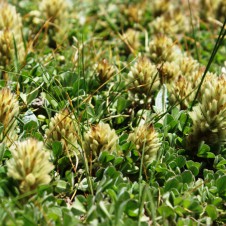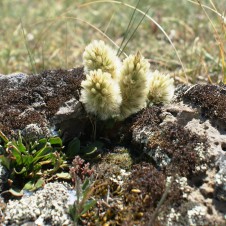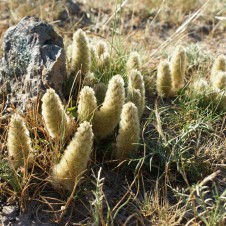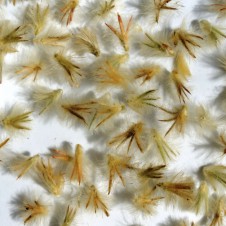General Description: A small, perennial, prostrate herb, to 8 cm tall, with green leaves on creeping stems and large, erect, fluffy, dull yellow flower heads. Leaves are arranged alternately along, creeping stems.
Flowers and Fruit: Flowers in soft brownish cylindrical spikes 3 to 7 cm long and 2cm diameter, the spikes are borne erect at the end of the stems. Flowers from August to January.
Site Preference and Tolerances: Grows on grey, red and brown clays and clay loams in grassland, bladder saltbush, and open woodland communities. It is also found on sandy red earths in mallee communities and on sandy skeletal soils on hillslopes.
Life Span: Has a thick woody rootstock, Growth commences from the rootstock in autumn or winter and dries off in mid-summer unless regular summer rains are received.
Wildlife Value: Seed will provide a food source for ground dwelling creatures and the leaves are palatable.
Other Values and Uses: This lovely herb is a stunning small addition to gardens because of its unusual fluffy flower-heads. This is a relatively infrequent species in most situations in which it occurs. This plant is readily eaten by stock and if occurring in quantity can provide useful forage in mid-summer when much of the winter-spring flush has disappeared. The taproot was eaten by Aboriginal people.
Other Scientific Names: Ptilotus spathulatus f. spathulatus, Trichinium mucronatum, Trichinium spathulatum
Other Common Names: Cat’s Paw
Germination Information: Usually grows well in a few weeks without any treatment but seed often has a low viability so can expect a lower germination rate.




